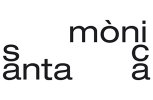Song for Many Movements: Scenes of Collective Creation
Talks, poetry, performance and live radio broadcasting. The ground floor of MACBA becomes a public agora over the course of six weeks. It presents moving-image works and archival materials that allow to trace alliances between over fifty artists and collectives.
In her poem “A Song for Many Movements”, Audre Lorde reminds us that “our labour has become more important than our silence”. The coming together of bodies makes noise, especially when attentive not only to the voices raised, but also to the sounds and vital rhythms emerging from the necessary pauses, relays, and breaks. It is in these multiple modes of holding one another and in the ongoing rehearsals of ways of being together, that scenarios for collective creation are articulated. This is what sustains collective bodies, but also institutions.
Song for many movements is an ephemeral experiment in which the ground floor of the museum becomes a stage for encounters, conversations and shared listening. It is a provisional opening of ongoing research, following its past and future genealogies, inside and outside of the museum, thus exposing collective learning dynamics and the questions raised in the process. The project is an invitation to conceive the exhibition as a space to be inhabited. A display of situated experiences, embodied archives and bodies of research that emerge from the transversal work of the museum and beyond.
More than an exhibition, it is a rehearsal in different ways of mutual exposure and sustenance of one another. The materials gathered refer to processes of collective creation in the present, while invoking past histories that constitute the living memory of what is to come. The project is articulated around an intensive public programme —talks, conversations, poetry, performance and live radio broadcast— that aims to turn the exhibition space of the museum into a public agora over the course of six weeks.
In dialogue with this series of encounters, Song for Many Movements unfolds a complex documentary device that includes moving-image works, sounds, publications, printmaking and archival materials belonging to more than fifty artists and collectives. These materials form constellations around specific case studies of militant cinema, community video or cooperative printing while exploring alliances and networks of solidarity across geographies and temporalities: from the 1969 Pan-African Festival in Algiers, to the International Palestinian Exhibition in Beirut in 1978, passing through the International Resistance Museum in exile (1973-1989) to the emergence of new forms of activism and cultural agitation around the HIV/AIDS crisis, which made clear that illness cannot be individualised and that it is always political.
These “scenarios of collective creation” are woven from spontaneous alliances, networks of affection and elective affinities. The collectivity at stake here is that which takes place in kitchen conversations, in shared readings and songs, in solidarity understood as an everyday practice. This “collective creation” refers to the brewing processes that precedes the instituting moment. What happens behind the scenes and before the heroic gesture with which some burst into history, while others are erased and silenced. Collective creation is mobilized within the invisible theatre of everyday life.
Participants
ACT UP, AIDS Anarchive (Equipo re), Radio Alhara, Xoán Anleo, María José Arjona, Miquel Arnal, Marwa Arsanios, Samira Badran, Belleza y Felicidad Fiorito, Erick Beltrán, Mohamad Bitari, Benzo Canela, Denis Chapón, Chimurenga, Collectif Mohamed, [contra]panorama, Julio Cortázar, La Cuina (MACBA’s Kitchen), Gustavo Duch (Soberanía Alimentaria), Equipo Jeleton, Falasteen Comunitat Palestina, FESTAC ’77, Festival Panafricain d’Alger, Ángela Furquet, Antonio Gagliano and Verónica Lahitte, Jesús Garay, Maite Garbayo Maeztu, Nancy Garín, Daniel Gasol, Mauricio Gatti, Gran Fury, Grupo Cine Liberación, Grupo Experimental de Cine de la Cineteca del Tercer Mundo, Grup de Treball, Nadia Jabr, Emily Jacir, Rasheed Jalloul, Salah Jamal, Kuwa Jasiri, Jokkoo Collective, Yazan Khalili (The Question of Funding), William Klein, Las Cosas, Learning Palestine Group (with Maya Watanabe), Lesley Lokko, Leve Productora, lumbung press, MACBA’s Young People’s Group (with Anna Irina Russell), Kati Macskássy, Hache Mau, Lina Meruane, Dana Michel, Marina Monsonís, Metzineres, Miramizu, Museo de la Solidaridad Salvador Allende, Nazario Luque, Neigbourhood Children’s Group (with Marc Larré), Ocaña, El Palomar, Past Disquiet (International Art Exhibition for Palestine, 1978) by Kristine Khouri and Rasha Salti, Independent Studies Programme (PEI) Participants, Dock Workers' Union of Barcelona, Vijay Prashad (Tricontinental Institute for Social Research), Precolumbian, Joan Rabascall, Hunter Reynolds, La Rara Troupe, Marlon T. Riggs, Mayra A. Rodríguez Castro, Ebla Sadek, Tania Safura Adam, Sabine Salamé, Teresa Stout (aka softchaos), Top Manta, Tucumán Arde, Josune Urrutia, Cecilia Vicuña, Video-Nou/Servei de Vídeo Comunitari, among others.



























